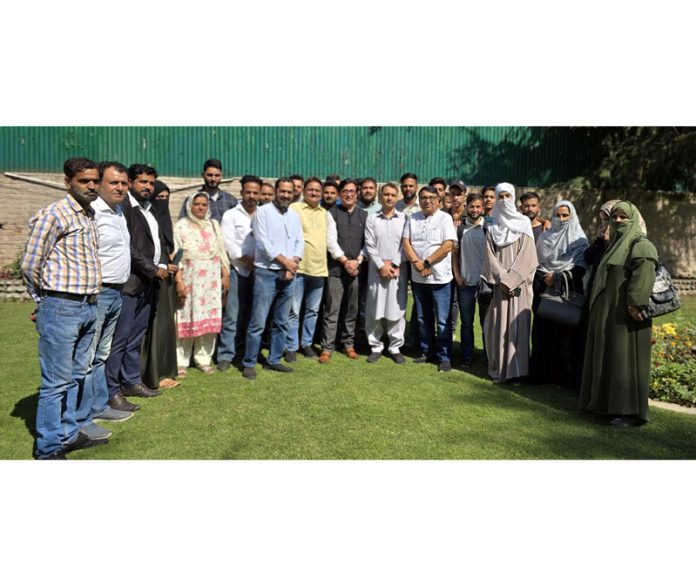Paris of the 1920s, with all its creative brain power, had nothing on Santa Fe at that time. Sure, we didn’t have an Eiffel Tower or a Rive Gauche or a Kiki de Montparnasse dancing on bar tops. But what Santa Fe lacked in the 1920s in grandiose boulevards and smoky cafés our artists and writers — a growing art colony — made up for in creative collaboration and bohemian lifestyles.
And with the likes of artist Will Shuster, who had survived World War I, the Santa Fe arts scene also made up for it with a strong dose of post-war lust for life. The proof is in the burning man. As the city celebrates Zozobra’s centennial, the Kiwanis Club of Santa Fe, which has overseen Zozobra since the 1960s, has put together a once-in-a-hundred-years-worthy production for Friday, August 30, including adding another day of celebrations at the Railyard.

For starters, the New Mexico History Museum opened its new exhibition, Zozobra: A Fire That Never Goes Out , which runs through September 2025. Despite what the title suggests, it’s not merely a timeline of Zozobra’s evolution. Rather, it speaks to how Zozo brings the Santa Fe community together and of the creative collaboration that got Zozobra going in 1924, when it started as a backyard party, and to 1926, when it became a public event.
Zozobra: A Fire That Never Goes Out at the New Mexico History Museum (open through September 2025) Museum open 10 a.m. to 5 p.
m. Saturday through Thursday and 10 a.m.
to 7 p.m. Friday 113 Lincoln Avenue $7 New Mexico residents, $12 nonresidents 505-476-5200; nmhistorymuseum.
org The exhibition includes more than 100 donated or on-loan artifacts and memorabilia, such as drawings and small wooden skeleton-like Zozo models. “I’m excited to tell this story,” says Hannah Abelbeck, the exhibition’s co-curator. “When we were looking at all the stories we could tell about Zozobra, a lot of people said, ‘Oh, Shuster, he’s such a creative spark.
’ Instead of focusing on just one figure, we tried to take a broader view of the nature of collaboration that it takes to make up and then annually repeat an event of this scale. It couldn’t have been and can’t be one person. It had and has to be collaborative.
” Abelbeck says the Zozobra we will meet this year owes his persona and existence to a self-inventing myth. She adds that the exhibition tries to address many stories about the birth and evolution of Zozobra. “That was the whole point [in the 1920s]: to come up with a really fun myth,” she says.
“So it can be hard to pull out exactly who did what. But for me, the story is how collaborative the invention was. It wasn’t one person — it was a lot of ideas, and a lot of people bringing ideas on an annual cycle, and then trying them out and seeing what stuck.
” She points to the burning of Judas during Holy Week, which Shuster is said to have seen while visiting a Native community in Arizona and which many attribute as the main influence for the creation of Zozobra. “I remember that Yaqui Village out of Tucson,” Shuster said in a 1964 oral history interview with Sylvia Loomis for the Smithsonian Archive of American Art. “They carry a — of course, this came up from Mexico — a figure, it’s just like a scarecrow actually, stuffed with straw and fireworks, and it represents Judas.
They put him on a burro and lead him around the stations of the cross and then bring him back to the center of the plaza and ignite him. They throw up their only sky rockets, have a big to-do, you know. .
.. But this idea of destroying some unpleasant thing is .
.. very old.
” Abelbeck and her co-curator and their team studied Shuster’s diaries and poured over archives. Their research helped them add to the exhibition lesser known pieces of information about Zozobra. “Another sort of precursor is the Cremation of Care — or Dull Care — which is not mentioned often but is clearly a predecessor to Zozobra,” Abelbeck says.
“It’s in California, and it’s a private burning play by the Bohemian Club. We figured that [connection] out because Dana Johnson, who was the newspaper editor in the [19]20s, would often run a series of names for Zozobra, like the King of Gloom. .
.. And often, one of them was Dull Care.
” “Dana Johnson, I think, at that time was the head of the Fiesta Council,” Shuster said in the 1964 interview. “He used to be the editor, a very live[ly] editor, of The Santa Fe New Mexican , full of fun. We got together and hatched out this idea of making an Old Man Gloom, and he dug up the name for it from a Spanish dictionary, [Zozobra,] which means the gloomy one.
“Dan Eastman, Max Eastman’s son, was here at the time and he helped me build this first one ...
I remember we stuffed it with excelsior which we had soaked in copper sulfate and then dried and stuffed it with that. The idea being that we’d get a beautiful blue green flame. Gus Baumann made the head out of a cardboard carton.
” Regardless of who did what in the creation of the myth of gloom in the 1920s, one thing is certain: We are grateful to them all, and especially to Shuster, who moved to Santa Fe instead of Paris in the 1920s and who decades later passed the Zozobra torch to the Kiwanis Club of Santa Fe. We also owe a debt of gratitude to Shuster’s cousin, Dr. Bill Crowley, back in Philly.
Shuster’s lungs were damaged by mustard gas during WWI, and worse, in 1920, he was diagnosed with tuberculosis. Crowley told him that if Shuster remained on the East Coast, he’d live a year, maybe two or three at best. “He [Crowley] said, ‘But if I were you, I would pack up and get out to the Southwest to some high dry place as soon as possible,” Schuster said in the 1964 interview.
“‘You’ll probably die of old age, snake bite, or drinking too damn much bad whiskey.’ “Within a couple weeks, I was here.” ◀ The New Mexico History Museum is at 113 Lincoln Avenue, 505-476-5200; nmhistorymuseum.
org . For updates on all the rules and regulations, including parking and road closures, visit burnzozobra.com .
To mark Zozobra’s 100th burning, the Kiwanis Club of Santa Fe added several new celebrations and commemorations. Fire power: Earlier this month, the city unveiled an 18-foot statue of Zozobra on Federal Place near the Santa Fe Community Convention Center. The welded steel statue was made by Don Kennell and his team at DKLA Designs and includes several references to Zozobra’s past.
The statue will soon have an augmented reality component (by Refract Studios) with a QR code that visitors will use to see a figure of Will Shuster. Flame train: “Last year on the plaza, the day after Zozobra, we ignited a torch,” says Ray Sandoval, the Zozobra event chair. Sandoval watched over the flame for a year at his home, keeping it lit with the help of Judith Moir, Zozobra event deputy, who, Sandoval says, went to every estate sale she could find to get candles.
On Friday, August 30, Sandoval says, “We will be taking the torch out to Lamy, where the flame will be transferred to a cauldron, and in that cauldron, it will come via train into the city [in the evening].” Once the flame arrives to the Santa Fe Depot station, he says “we will reignite a little torch from the cauldron, and we will have the cross-country team from Santa Fe High run the torch up into the [Zozobra] venue.” Fired-up youth: This year, after negotiating with their insurance company, the Kiwanis Club of Santa Fe allowed children, also known as Zozobra’s Gloomies, to participate in the crucial role of setting Zozobra on fire — but just this once.
Weekend warm-up : The fun doesn’t end on burn night. On Saturday, August 31, everyone is invited to join free Zozobra Appreciation events at the Railyard, from 3 to 9 p.m.
, after the Farmers’ Market closes. Cool off at the water tower: Lensic 360 will present performances throughout the afternoon on Saturday, August 31, and into the evening, including one at 6 p.m.
by Grupo Divino, an acoustic band from northern New Mexico that plays traditional Latin music, and another by Cuarenta y Cinco, also from northern New Mexico, at 7:30 p.m. More information at lensic360.
org . Sizzle reel: Violet Crown Cinema will screen the documentary Zozobra: 100 Years of Fire and Redemption (2024, 42 minutes), directed by McCall Sides, every hour on the hour, from 11 a.m.
to 10 p.m. on Saturday, August 31.
Reserve a ticket online ($2) or for free in person. Violet Crown Cinema is at 1606 Alcaldesa Street; 505-216-5678. More information at santafe.
violetcrown.com/cinema . Other activities include mini train rides for children on Sky Railway, a 2K Zozo Run for all, and a Gloom Dash for children ages 1 to 7.
More information at runsignup .com/Race/NM/SantaFe/ZozoRun..



















